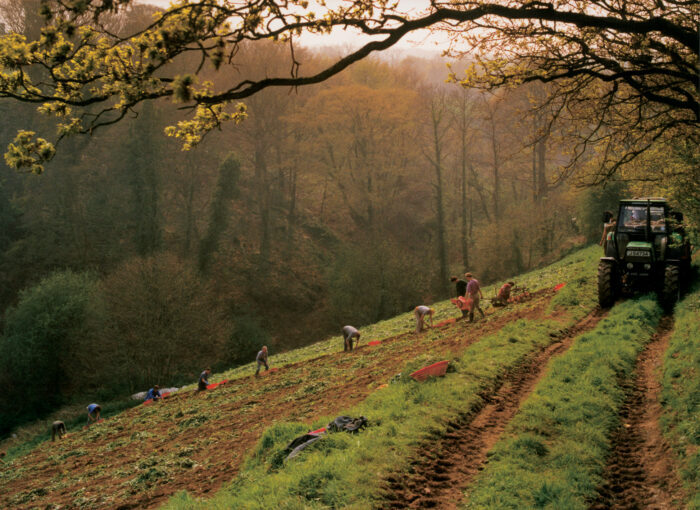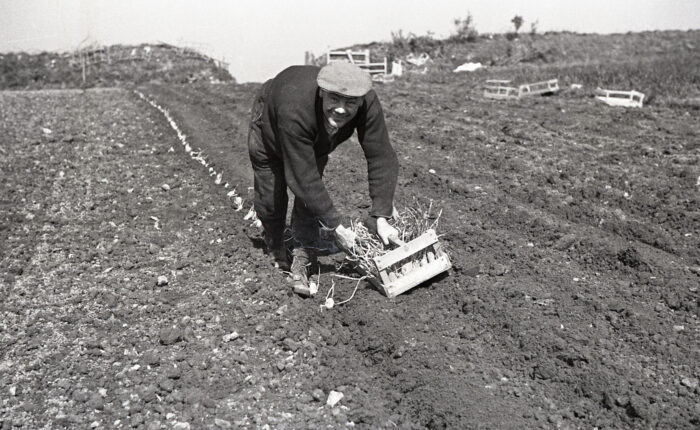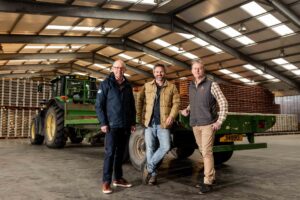
Our guest writer, Suzanne Wynn, writes on how mass production deprives us of food that has a real sense of place and how we can fight back.

When I used to have the job of recommending UK foods for Slow Food’s Ark of Taste, one of the critical criteria was that the food was associated with a specific geographical area. The aim of the Ark of Taste was to raise the profile of distinctive geographical products. Slow Food began in response to McDonald’s opening a branch at the foot of The Spanish Steps in Rome, a fightback against the creeping (now galloping) homogenization of food. The aim and concern is still relevant today, but one has to wonder whether the battle is not already lost. How many truly distinct products exist to be protected?
Slow Food were not the only ones concerned with the fight. The European Union has a register of Protected Food Names, which unlike the Ark of Taste, has some legal clout. It is illegal for anyone other than those covered by the submission to sell a product using the protected name. Although it is a protectionist measure, it has little value in terms of recognizing products that are worthy of protection. What might once have been a genuine factor in the distinctiveness of a product seems to be easily got around, or blatantly overlooked, if continuation becomes troublesome. Unless one of the designated producers complain (and they are probably all up against the same issues) foods have continued to be sold under the protected name even after people begin to notice that it doesn’t taste the same. Once the protection exists it seems easy for the protected to carry on pretty much as they like. How often is a producer removed from the group? Come to that, in Britain at least, the parameters were often deliberately set very wide so as not to exclude any existing producer.
When I look again at the criteria we used for recording foods in the Ark of Taste it seems that most of them hold little relevance in a changing world and yet it may be possible to find a small producer still using traditional production methods.
A case in point is the Jersey Royal potato. Pretty much everyone now accepts that Jersey Royal potatoes don’t taste like they remember, but I am reliably informed that if you visited the island and were shown a small farmer who continues to grow them on a cliffside plot (known as Côtils), fertilizing them with seaweed and harvested by hand, you might taste the flavour you remember. These are the potatoes that the locals make a bee-line for. However, if everyone wants to be able to buy them in a supermarket of course you should expect that production has changed significantly. And don’t be fooled by the supermarket’s own hype. A typical ploy is to tell you all about the traditional ways of one producer, whilst in reality their production accounts for only a small percentage of the total and the bulk is produced quite differently – in the case of Jersey Royals, on flat ground that can be harvested mechanically.
If you are a gardener, you will understand that some things grow more easily than others in a particular location. You might have successfully grown something in a previous home that you now find a struggle. On the other hand, even if it is just a weed, there will be some things that just want to grow. This relates to the terroir, which literally goes deeper than just the structure of the soil to the underlying rock and the nutrients that it provides. Then there is the aspect of the land, the altitude and prevailing weather. We are most familiar with terroir in relation to vineyards, where small but significant variation may exist between neighbouring plots, or even within the same plot. It is one of the reasons that I find foraging so fascinating. You will notice that something grows on one side of a hedge but not the other dependent on the shelter or sun that it requires. You will also struggle to understand why seemingly identical circumstances fail to produce whatever you are looking for! If we were able to correctly diagnose all of the requirements of fungi such as Cep or Morel we would be cultivating them!
Terroir would seem a pretty fixed concept and indeed the underlying make up of our land is, but quite significant changes have been observed in my own lifetime concerning how land is managed and used. Our very rare and precious heather moorlands have diminished in size and their make-up. Bracken has replaced heather on large parts of the old moors and few of them now support our native Red Grouse population. Our rivers, and consequently the oceans, have become polluted, increasingly as a result of human sewage but also of run-off from intensive farming and chemical fertilisers. The wonderful sight of wild salmon in our rivers is now so rare that none caught are kept and eaten.
Land that is particularly suited to a crop often cannot sustain production in the quantities now required. If you continue production of the same crop without rotation and fallow periods, that land will eventually become diseased. So, growers must find new land and there will be a limit to places like coastal fringes. Formby Asparagus is an example of this, the once famous area now exists only as a National Trust Trail of the old grounds. Another example would be Cheddar Strawberries, once so renowned that a railway line was established to transport the crop to London. Whilst not coastal, the “cliffs” that enabled the ground to warm early were the inland limestone ones around Cheddar Gorge. When these became diseased, production was moved lower down the slopes and the crops grown on level fields which in turn gave way to table-top grow bags (the soil not even from Britain, let alone Cheddar). The association between Cheddar and Strawberries for some reason persists even though they taste nothing like they did when grown in the higher slopes of Mendip. Growing strawberries in open ground proved a decisive factor in a taste test we performed for Slow Food, however it has to be admitted that this is hard to make financially viable on a commercial level. Riverford founder Guy Singh-Watson wrote recently of his struggles to do this but hopes that he has finally cracked the issues, albeit at a level of production that will meet only half of his demand.
Although the terroir might have changed, some producers maintain that the expertise remains concentrated in an area. However, changes in production methods make old expertise less relevant. The make- up of our population is more fluid than of old and a large proportion of agricultural labour comes from abroad.
I do still observe differences in food preferences from region to region, e.g. a fondness of offal in the Manchester area, of beef-fat fried chips in Yorkshire and for Clotted Cream in Devon to name just a few. However, I think that changing tastes generally have put paid to most of the distinctly regional specialties such as the baked yeasted buns and cakes. We seem to get more excited about foreign foods than a good old-fashioned Lardy Cake or Bath Bun, both of which you would struggle to find nowadays anyway.
Despite the lack of regional distinctiveness, our land still provides national advantages. Our beef and lamb remains the best in the world thanks to our climate being ideally suited to growing grass. If you want to experience the meat of an area, look for members of Pasture For Life. Here you will find beef and lamb that has been 100% pasture fed so each animal will give a proper taste of the area in which it was raised. You will also be provided with all the information you need to cook it appropriately – the breed, the age at which it was slaughtered and the type of pasture on which it was raised. Remember back to a previous blog and Dorothy Hartley’s exhortation not to treat all types of mutton in the same way!
That same grass is also essential to our dairy farming even though most cream or butter may now be unattributable to any specific area it can be easy to overlook how distinctly British it is.
As an island nation with nowhere more than 70 miles from the sea we should make more of our fish, and although there are few small fishing boats operating today, partly because there are fewer fish remaining, what remains is still highly valued on the continent. It is an irony that so many of our best fish go abroad. Eating fresh fish in sight of the sea in which it was caught is one of the greatest eating pleasures to be had in this country. The west-country coast of Cornwall and Devon is dotted with humble eateries serving locally landed fish – crab, lobsters, mackerel (line caught), sardines and farmed oysters are all typical of this area. On the East Coast, Norfolk is also known for its crabs and further north you will find kippers. The Scottish west coast is the place to go for creel-caught Langoustine. It is really a disgrace that I first got to know them in France but now I seek them out whenever I am in Scotland.
Fighting Back
We make it too easy for misleading marketing to happen. We need to keep our eyes open and question what we are told.
I am renowned for asking questions when I eat out – where does the venison come from? what breed? farmed or wild, etc. I’m not sure the busy staff always appreciate my questions, but this is how I let people know what matters to me. If more people did the same the answers would already be printed on the menu!
Above all do trust your own sense of taste, if things don’t taste like you remember it is probably not your imagination or diminishing palate but a symptom of changing production.

My recipe for Bath Buns below outlines how they were an early casualty of mass production to cater for The Great Exhibition.
BATH BUNS
The Bath Bun that was so popular in the latter half of the eighteenth century was, from accounts around that time, a light sweet cake similar to brioche, strewn with caraway comfits (caraway seeds dipped repeatedly into boiling sugar).
Elizabeth David contends that the Great Exhibition of 1851 may have been responsible for their demise. During its five and a half month run six million visitors consumed between them a total of 943,691 Bath Buns. The refreshments served there were reputed to be of very poor quality, and it is easy to imagine that when catering for such numbers short cuts were taken.
Unfortunately, caraway comfits are no longer available, and the white sugar nibs that came to replace them are only available to the trade. An approximation can be made by sprinkling the tops with caraway seeds and roughly crushed sugar crystals intended for coffee.
Makes 16-18
Ferment
20g/¾ fresh yeast
25g/1 oz sugar
275ml/10 fl oz milk
140g/5 oz white bread flour
Heat the milk until it feels lukewarm and blend with the yeast and sugar. Stir into the flour and cover the bowl. Leave in a warm place for several hours until the ferment has risen to its full extent and then dropped.
Dough
310g/11 oz white bread flour
225g/8 oz unsalted butter
115g/4 oz sugar
5g/1 tsp salt
ferment from above
1 tsp lemon juice
caraway seeds
Mix the flour, salt and sugar together then rub in the butter until the mixture resembles breadcrumbs. Mix in the ferment and lemon juice and stir until the mixture is reasonably smooth. Cover the bowl and leave in a cool place overnight to double in size.
Take tablespoonfuls of the mixture and shape them into balls with you hand. Flatten them slightly with you hand as you place them onto baking trays and sprinkle caraway seeds on top. Cover and leave in a warm place to rise for at least an hour.
Topping
2 tbsps sugar
1 tbsp milk
2 tbsps sugar crystals (A la Perruche rough sugar cubes are ideal)
Heat the oven to 200°C/Gas Mark 6 and bake for about 15 minutes until they are golden brown. Whilst they are cooking prepare a glaze by heating 2 tablespoons of sugar with 1 of milk. Brush this over the buns as soon as they are removed from the oven (taking care not to dislodge too many caraway seeds) and strew with the sugar crystals, roughly pounded in a mortar.




